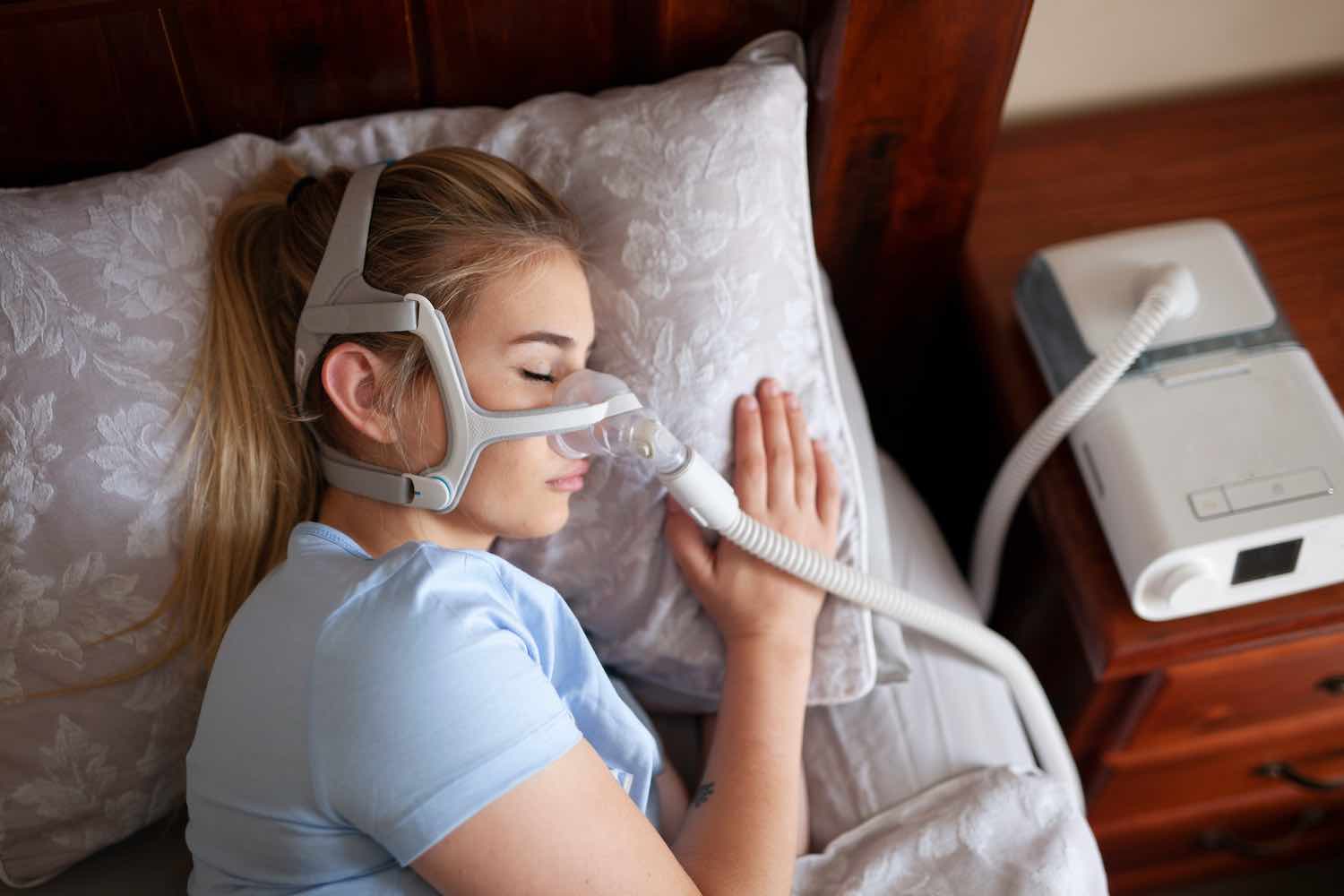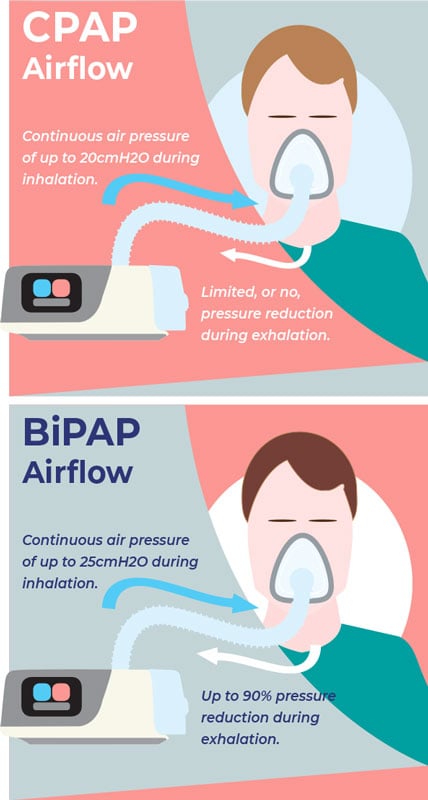Just how to Locate the Best BiPAP Rental Providers Online
Just how to Locate the Best BiPAP Rental Providers Online
Blog Article
Bipap vs. CPAP: Which Is the very best for Your Sleep Condition?
When navigating the intricacies of rest conditions, the selection between BiPAP and CPAP therapy is a vital factor to consider. While CPAP gives a consistent air flow ideal for obstructive sleep apnea, BiPAP's double pressure setups may improve comfort for those with even more elaborate respiratory issues.
Comprehending Rest Disorders
Rest conditions incorporate a variety of problems that interfere with typical sleep patterns, influencing both the quality and period of remainder. These conditions can manifest in different kinds, including sleeping disorders, rest apnea, narcolepsy, uneasy leg syndrome, and parasomnias. Each problem presents special challenges, often bring about considerable daytime fatigue, cognitive impairment, and emotional disturbances.
Insomnia is characterized by problem dropping or staying asleep, while sleep apnea includes duplicated disruptions in breathing throughout sleep, often bring about fragmented rest. Narcolepsy, on the other hand, is marked by excessive daytime drowsiness and abrupt sleep strikes. Troubled leg syndrome causes unpleasant feelings in the legs, prompting an unmanageable impulse to relocate them, which can also impede the capability to sleep.
The influence of sleep conditions prolongs beyond specific wellness, influencing overall efficiency, relationships, and high quality of life. Recognizing the specific nature of each condition is important for efficient medical diagnosis and treatment. As rest health becomes significantly recognized as a crucial element of general health, addressing these conditions is crucial for improving both sleep quality and everyday performance.
Exactly How CPAP Works
Continual Positive Airway Pressure (CPAP) treatment is often utilized as a main therapy for obstructive rest apnea (OSA) The device of CPAP involves the usage of a machine that supplies a constant stream of air via a mask used throughout sleep. This airflow keeps positive pressure in the airway, preventing the collapse or obstruction of the throat that can occur throughout sleep.
When an individual breathes in, the CPAP equipment supplies a constant circulation of air, making sure that the respiratory tract continues to be open - BiPAP Rental. This not only minimizes the symptoms of OSA, such as snoring and disrupted rest patterns, but likewise minimizes the associated health threats, consisting of cardio problems and daytime fatigue
The pressure settings on a CPAP maker can be tailored to meet specific client needs, usually determined through a sleep study. Individuals normally go through titration research studies to locate the optimum pressure level for their special problem. Routine follow-up and changes might be required to ensure effectiveness and comfort. Generally, CPAP therapy has been shown to dramatically boost the high quality of rest and total health for individuals dealing with obstructive rest apnea.
Just How BiPAP Functions
BiPAP, or Bilevel Positive Respiratory Tract Pressure, is a specific kind of non-invasive air flow that is particularly advantageous for patients with conditions such as intricate rest apnea or respiratory problems. Unlike CPAP, which delivers a continuous stream of air at a single pressure, BiPAP offers 2 unique pressure settings: a higher inspiratory stress for inhalation and a lower expiratory stress for exhalation. This dual-pressure strategy enables for easier breathing, minimizing the initiative called for throughout exhalation.
The you can try here tool runs through a mask fitted over the nose or mouth, linked to a device that generates atmospheric pressure. When the patient inhales, the equipment provides the greater stress to assist with airflow, guaranteeing that the air passage continues to be open. Upon exhalation, the maker immediately minimizes the stress, making it more comfy for the person to take a breath out.

Key Distinctions Between BiPAP and CPAP

On the other hand, BiPAP (Bilevel Favorable Airway Stress) uses two various pressure settings: one for breathing and a reduced one for exhalation. This dual stress system enables for more comfy breathing, particularly for individuals who battle with exhaling versus a constant pressure. BiPAP is often advised for individuals with complicated sleep apnea, chronic obstructive lung disease (COPD), or those that need added assistance during rest.
In addition, the intricacy of BiPAP devices commonly leads to a greater price and calls for more cautious titration than CPAP. BiPAP Rental. Understanding these essential distinctions can aid in acknowledging which device might be much more suitable for details rest disorders, establishing the foundation for enlightened treatment decisions
Picking the Right Treatment
Exactly how can one identify one of the most suitable treatment for taking care of rest disorders? The choice in between BiPAP and CPAP therapy largely pivots on the specific attributes of the rest problem, the client's overall health, and their convenience with the gadget. CPAP, which provides a continual stream of air, is commonly recommended for obstructive rest apnea (OSA) It preserves an open air passage during rest, effectively protecting against apneas and hypopneas.
Conversely, BiPAP supplies 2 degrees of pressure: one for breathing and a lower one for exhalation. This double pressure system is useful for patients with complex rest apnea or those who experience problem exhaling against a constant pressure. In addition, BiPAP is typically advised for individuals with breathing conditions, such as chronic obstructive pulmonary illness (COPD), where varying stress settings can improve convenience and conformity.
Ultimately, a detailed evaluation by a rest specialist, including a sleep study, can aid identify which therapy straightens ideal with the person's demands. Aspects such as convenience, convenience of usage, and particular medical conditions ought to likewise be taken into account to optimize treatment outcomes.
Final Thought
In summary, both BiPAP and CPAP serve distinct functions in the monitoring of sleep problems. CPAP is efficient for obstructive rest apnea with constant airflow, while BiPAP site web provides dual pressure setups that improve comfort for those with complicated rest apnea or respiratory system concerns. The choice in between these treatments must be directed by specific needs and conditions, demanding a comprehensive assessment by a rest professional to ensure ideal treatment results and improved top quality of sleep.

Overall, CPAP treatment has been shown to substantially improve the top quality of rest and total wellness for people experiencing from obstructive sleep apnea.
BiPAP is frequently recommended for patients with complicated sleep apnea, persistent obstructive lung disease (COPD), or those who call for added support during sleep.
CPAP is effective for obstructive sleep apnea with regular air movement, while BiPAP uses twin stress settings that enhance convenience for those with complex sleep apnea or respiratory concerns.
Report this page